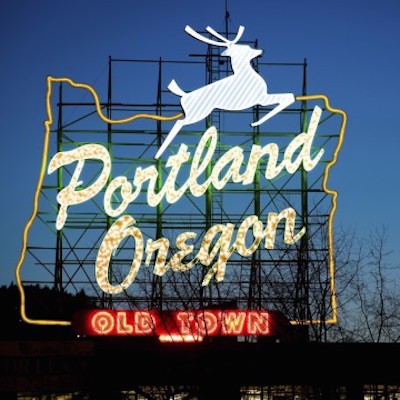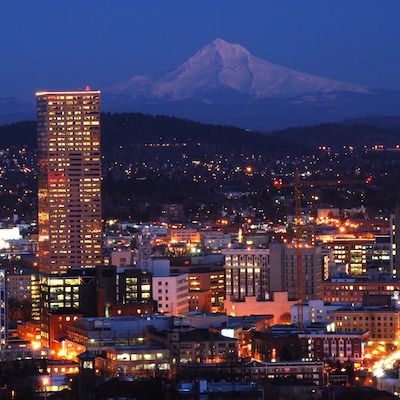Why Connecticut Lost GE by Aaron Renn
Saturday, January 16, 2016

Connecticut’s business climate is poor. The Tax Foundation ranks its business-tax environment 44th in the country. GE’s decision to move is part of a larger story. Changes in the economy and culture, and improvements in governance of cities, have created a profound competitive challenge for Connecticut, one without easy solutions.
For decades, nearby New York City’s pain was Connecticut’s gain. New York was a grim, dangerous, failing city that almost went bankrupt in the 1970s. More than 100 Fortune 500 companies fled during that era, many heading to suburban New Jersey and Connecticut—including GE, which moved in 1974 from 570 Lexington Avenue to Fairfield, Connecticut. The same story played out in cities across America, with corporations fleeing dying downtowns for the safety of the suburban office campus.
Today, cities are back. The policing revolution—helped by the waning of the crack epidemic—made cities safe again. Core public services were slowly restored, parks were rebuilt, and transit systems were cleaned up and refurbished. Investment started returning. The structure of the economy changed, too. Starting in the 1990s, technology radically transformed the business world and is now a major industry in its own right. The financial industry was deregulated. Globalization drove demand for new types of business services, reinforcing the need to stay on top of a constantly shifting landscape. People with advanced, specialized knowledge are the ones who help companies innovate now. These employees work in highly interactive ways that benefit from clustering together—disproportionately in urban areas like New York, Chicago, and Boston.
Big cities have become increasingly desirable to the young. The children of those who fled to suburbs to escape urban decline have embraced city living. Unlike the Baby Boomers, who were raised in an era when cities were getting worse and worse, the Millennials came of age as cities were being reborn. This produced a completely different psychology. With a larger segment of the next-generation workforce located in urban areas—and often not owning cars—many companies have had to open downtown offices again or relocate entirely to attract the talent they need.
As a result, the urban cores of New York City and Chicago have hit record employment levels. Companies like Google that didn’t even exist in the bad old days of the seventies and eighties now employ thousands of people in downtown environments. Manhattan is Google’s second-largest engineering office outside Silicon Valley. Boston has become a dominant location for biotech, with Cambridge’s Kendall Square alone adding over 10 million square feet of biotech space since 2009. It’s not surprising that the increasingly tech-driven GE is moving to Boston. Not only is Boston the premier urban center in New England; it has also long been America’s traditional second city of technology.
The tide of business relocation has turned against Connecticut. While not all downtown business districts are booming—those in New Haven, Hartford, and Bridgeport certainly aren’t—Connecticut happens to be located between two of the most resurgent ones in the country. In the old environment, Connecticut didn’t have to work that hard to attract business. Even today, its tax-climate rank of 44th is better than New York State’s (49th) and New Jersey’s (50th). For years, Connecticut could get away with being the best house on a bad block. During the seventies and eighties, corporations exiting decaying downtowns made a beeline for the suburbs—and for many, that meant Connecticut. Today, the flow of firms is just as likely to be going in the other direction. And the rise of the technologically enabled business means that it’s now possible to scatter even white-collar functions all over the globe. Connecticut is competing for the highest-end jobs not just with downtowns and regions in other states but also with cities around the world.
It doesn’t matter anymore that Connecticut’s tax environment is (marginally) better than New Jersey’s. Businesses can go anywhere. The finance industry, for example, has found places like Charlotte a much more congenial location to set up shop. The suburban office park is not going away, but in the future, it’s headed for places like Houston, where ExxonMobil is building a 10,000-employee campus; Dallas, where Toyota is setting up its North American campus; or even Bangalore, with its massive outsourcing operations. All these locales have vastly superior cost climates to Connecticut, which has little chance of attracting any business that doesn’t have a clear geographic requirement for being in the northeastern United States. Unsurprisingly, while even the less-than-stellar national economy grew total jobs by 5.3 percent from 2000 to 2014, Connecticut’s job growth was down 1.6 percent. Connecticut is increasingly the odd man out, falling short both to resurgent downtowns and to cheaper Sunbelt and global cities.
All is not lost. Connecticut still has advantages in its high-quality workforce and proximity to New York City. But rather than adjusting to new realities, Governor Malloy added insult to injury with his tax increases. GE’s departure should be a wakeup call in Hartford that marketplace patience with the state’s harsh business climate is wearing thin.
Aaron M. Renn is a senior fellow at the Manhattan Institute and a contributing editor of City Journal.

Photo courtesy of Twitter
This article originally ran in City Journal on January 14, 2016

Photo courtesy of Twitter
Related Slideshow: The 15 Biggest Business Stories of 2015
Related Articles
- PSU Students React to President’s Compensation and For-Profit Business
- PSU President Wiewel’s Consulting Business is Unique Among University Presidents
- Price Fluctuations Threaten to Drive Marijuana Growers Out of Business
- Quintana Galleries Closing Its Doors After 42 Years of Business
- Revenue Down 30 Percent Since Street Closures, Old Town Businesses Say
- Scott Bruun: Does Portland Really Want Your Business?
- SBA is Accepting Nominations for 2016 Small Business Week Awards
- Saul Kaplan: Stop Treating Business Model Innovation As Change Management
- Portland State Business Accelerator Wins Top Honors for Tech Startups
- Portland Set to Host International Cannabis Business Conference
- PCC SBDC Head Wins State Small Business Award
- OTBC’s $100K Startup Challenge Assists Small Business Startups
- Organize + Energize: How Organized Was Your Business This Year?
- Portland Apparel Lab: Business Accelerator for Fashionistas
- Portland Business Alliance Accepting Applications for Small Business Program
- Portland Business Alliance Supports Banning Criminal History Check Box on Job Applications
- Portland Business Alliance Releases Economic Check-Up
- Should Marijuana Business Ownership Be Limited to Oregon Residents?
- Small Business Association to Provide Winter Weather Tips Via Webinar
- State Approves New Guidelines For Smarter Business Purchasing
- Startups Become Shrinking Portion of Oregon Business
- Small Business Profile: The Portland Rock Gym
- The 14 Biggest Business Stories of 2014
- The 15 Biggest Business Stories of 2015
- Why Strip Clubs Should be Treated Like Any Other Business
- What Landlords Should Know Before Renting to a Marijuana Business
- The Five Types of Businesses With Most Complaints in Oregon
- Small Business Profile: The Outdoor Project
- Small Business Profile: Ruby Jewel
- Small Business Profile: Cyril’s at Clay Pigeon Winery
- Small Business Profile: Cascade Brewing
- Small Business Profile: Boys’ Fort
- Small Business Profile: Float On
- Small Business Profile: Flying Fish Co.
- Small Business Profile: Portland Roasting Coffee
- Small Business Profile: Olympia Provisions
- Oregonians Against Discrimination: Business Leaders Luncheon at OCC
- Oregon’s Business Rankings
- GOP Blast Oregon Democrats for Killing Small Business Legislation
- Forty Businesses Demand that the City Let Uber Operate in Portland
- Forbes Ranks Portland 3rd Best in US for Business and Careers
- Homelessness Divides City Council and Businesses
- How Does Oregon Rank for Business
- How A Portland Acupuncture Business is Seeking to Change the Face of Health
- Homelessness Expert to Speak at Portland Business Alliance Event
- Food is Business in Portland
- Don’t Let Your Business Get “Netflixed”
- Bruun’s Views: NLRB Ruling Bad for Oregon Business
- Besaw’s Vandalized On Last Day of Business
- Banking Then and Now: A Tale of Two Business Owners
- Business Oregon Creates $250,000 Loan Program
- Business Profile: Knowledge U’s New Chief Marketing Officer Gail Galuppo
- Cylvia Hayes’ Emails Show Perverse Relationship Between Business and “First Lady” Role
- College Counseling: Great Schools for Equine Business Management Programs
- INVESTIGATION: Merkley Spends 78% of His Campaign Funds with Businesses Outside Oregon
- James Beard Public Market Partners with Local Businesses for Market Fuego Fiesta
- Oregon Marijuana Business Groups Push to Allow Consumption in Public Venues
- Oregon Liquor Control Commission Looks to Help New Marijuana Businesses
- Oregon Gets Middle Marks for Business Friendliness
- Oregon Medical Marijuana Business Conference to Convene in Eugene
- Oregon Officials and Businesses Give Support For Pro-Solar Legislation
- Oregon Secures $300,000 in Federal Funding For Small Business Grants
- Oregon Receives Low Rankings for Business from Tax Foundation
- Oregon Among Worst States for Small Business
- Marijuana Retailers Say Bank Rules Threaten Safety, Hurt Businesses
- MAP: Business Evictions in Multnomah County
- Jobs and Businesses Boom in Downtown Portland
- Marijuana Sales Have Doubled in 1st Month of Retail Sales, Says Business Leader
- Mother’s Schroeder Shares 15 Lessons From 15 Years in Business
- NedSpace: A Home for New Portland Businesses
- Multnomah County Hires Fewer Small and Minority Businesses
- Apple is Getting into the Car Business


































 Delivered Free Every
Delivered Free Every
Follow us on Pinterest Google + Facebook Twitter See It Read It